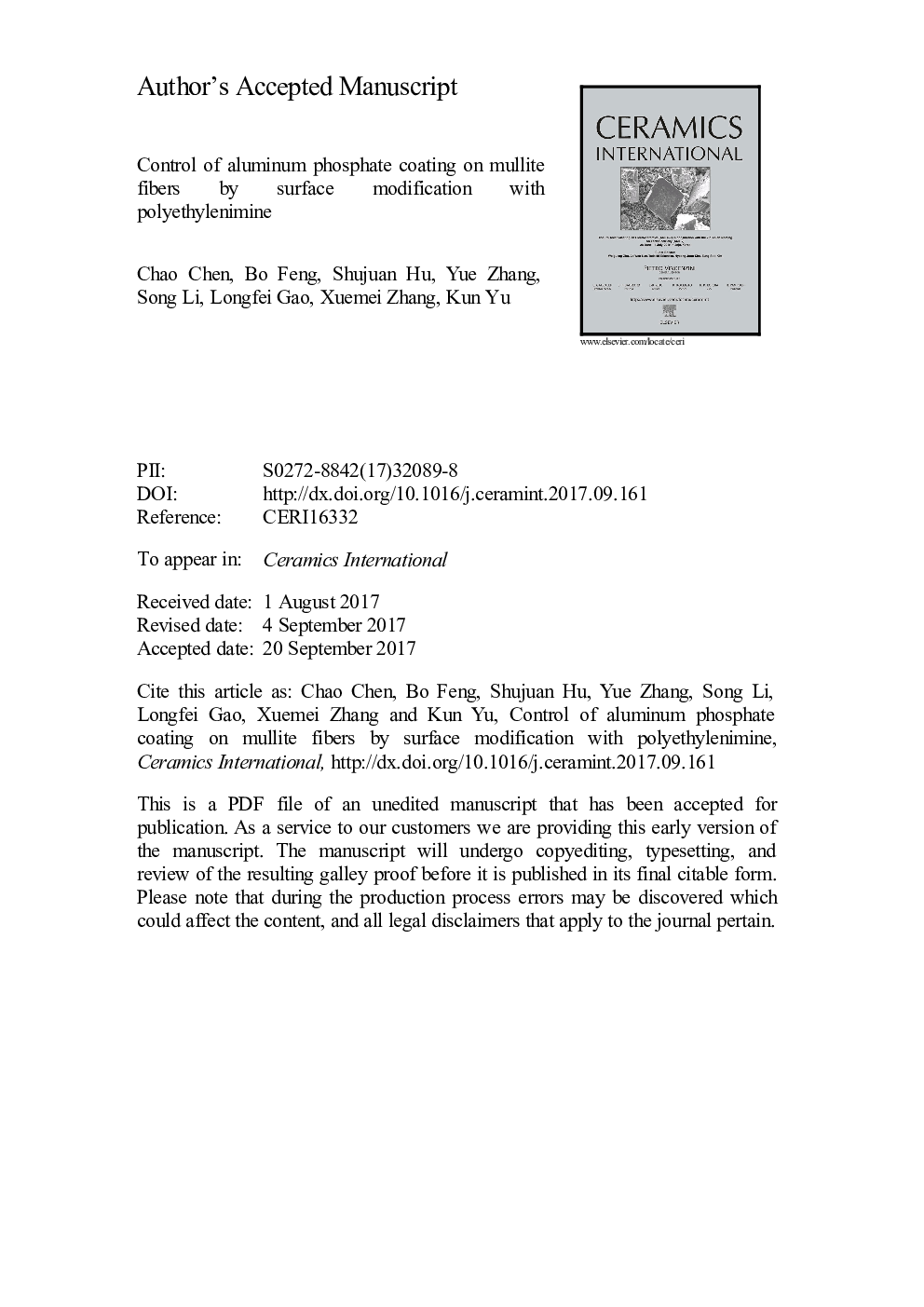| Article ID | Journal | Published Year | Pages | File Type |
|---|---|---|---|---|
| 7888872 | Ceramics International | 2018 | 37 Pages |
Abstract
Aluminum phosphate (AlPO4) is a promising oxidation-resistant and weak interface for ceramic-matrix composites. In this research, AlPO4 coating was deposited on mullite fibers by an improved liquid-phase method based on electrostatic attraction. A cationic polyelectrolyte, polyethylenimine (PEI), was used for surface modification of mullite fibers. The formation process, phase evolution and microstructure of the coating were studied. The zeta potential of AlPO4 particles, PEI-adsorbed AlPO4 particles, and PEI-adsorbed mullite particles was characterized to find the proper pH value for improving electrostatic attraction. The obtained AlPO4 coating was porous and continuous, whose thickness could be controlled by multiple coating cycles. The relatively low calcination temperature (600 or 1000 °C) was a useful heat treatment method to develop bonding between coating and fiber as well as reduce the fiber strength degradation. The phase transformations of AlPO4 have little volume change, and cristobalite AlPO4 is thermal compatible with mullite. Therefore, the coating structure was preserved after calcining at 1200 °C. The technique is also applicable for other fibers contained mullite phase to fabricate high-performance AlPO4 coated mullite/mullite composites.
Related Topics
Physical Sciences and Engineering
Materials Science
Ceramics and Composites
Authors
Chao Chen, Bo Feng, Shujuan Hu, Yue Zhang, Song Li, Longfei Gao, Xuemei Zhang, Kun Yu,
